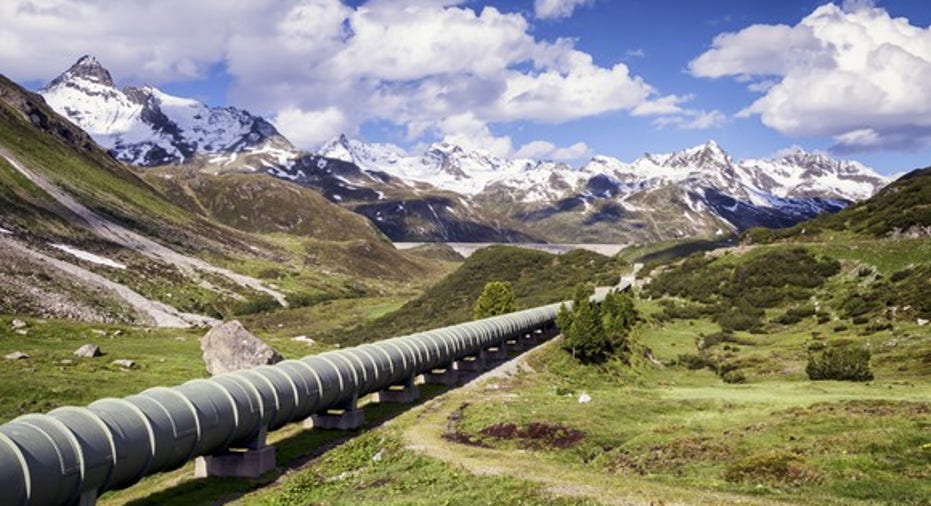5 Things You Didn't Know About Enbridge Inc

Despite the boom in energy infrastructure over the past several years, Enbridge (NYSE: ENB) hasn't garnered the attention of its more closely followed U.S. peers. Because of that, many U.S. investors don't know that much about the company. Here are five things investors might be surprised to learn about the Canadian pipeline giant.
No. 1: It's the global energy infrastructure leader
Enbridge recently vaulted to the top of the mountain in the North American energy infrastructure segment. Through a combination of organic growth projects and needle-moving acquisitions, it's now the largest infrastructure company by enterprise value, weighing in at 166 billion Canadian dollars ($123.6 billion). For perspective, it's nearly 20% larger than its nearest competitor, utility Duke Energy (NYSE: DUK), which has a current enterprise value of $107 billion.
Image source: Getty Images.
No. 2: Enbridge's pipeline is the best
Enbridge's lead is only expected to expand in the future because it also boasts one of the sector's largest growth backlogs. The company currently has CA$27 billion ($20 billion) of projects underway through 2019. For perspective, that's about CA$4 billion more than Canadian pipeline peer TransCanada (NYSE: TRP) will invest over that same timeframe, though it's a smaller backlog than Duke Energy's $30 billion capital plan through 2021. That said, Enbridge's pipeline should fuel 12% to 14% annual growth in cash flow per share, while Duke's will only deliver 4% to 6% annual earnings growth.
In addition, Enbridge has another CA$48 billion of long-term projects in development, pushing its combined backlog up to CA$75 billion ($55.8 billion). For perspective, that backlog is almost bigger than the current size of several well-known U.S. pipeline companies, including Williams Companies (NYSE: WMB) at $57 billion.
No. 3: Speaking of pipelines, it operates the longest oil pipeline system in the world
While Enbridge is a diversified company, its bread-and-butter business is crude oil pipelines. In fact, it controls the longest oil pipeline system in the world. Overall, the company owns 27,600 km (17,150 miles) of oil and liquids pipelines in North America, most of which move oil from the oil sands region in western Canada to market centers in the U.S. In fact, Enbridge moves 2.8 million barrels of oil per day and transports 68% of U.S.-bound Canadian oil exports, accounting for 28% of America's total oil imports.
Image source: Getty Images.
No. 4: It owns a rapidly growing renewables business
While Enbridge is a leader in moving oil, it has invested heavily in cleaner energy sources in recent years, including gas pipelines and renewables. Speaking of renewables, the company is currently the second largest wind and solar power generator in Canada. Overall, it has 23 renewable generation assets, with more on the way. One area that will drive growth in the future is offshore wind in Europe. The company is currently investing a combined CA$2.5 billion on offshore wind farms in the U.K. and Germany. Meanwhile, it has three late-state offshore windfarm development projects in France that represent upwards of CA$4.5 billion of investments.
No. 5: It's a future dividend aristocrat
In addition to growing its size, the other thing Enbridge has done throughout the years is increase its dividend on an annual basis. With its recent increase this past January, the company has now raised its payout for 22 consecutive years, averaging an 11.2% compound annual growth rate over the previous two decades. While that means the company is three years short of becoming an official Dividend Aristocrat, it has a clear line of sight toward claiming that title in the future. In fact, under the company's current guidance, it expects to achieve 10% to 12% compound annual dividend growth all the way through 2024, while maintaining a conservative payout ratio of 50% to 60%.
That projection blows its competition out of the water. For perspective, Duke Energy only expects to grow earnings by 4% to 6% per year through 2021 -- likely limiting dividend growth to that range -- while Canadian rival TransCanada only plans to increase its payout by 8% to 10% per year through 2020. Meanwhile, Williams Companies is targeting a potentially higher growth rate of 10% to 15% annually. However, it's offering a vague timeframe of "over the next several years," and it will pay out a much higher percentage of its cash flow, making its payout riskier. Add it up, and Enbridge will grow its dividend at a higher rate, over a longer period, and with less risk than rivals.
Investor takeaway
The most impressive thing about Enbridge isn't its sheer size, but the quality of its growth. The company's project pipeline is better than those of any of its competitors, putting it on pace to deliver peer-leading dividend growth for nearly the next decade. It's a forecast that should fuel market-beating returns for investors who hold this stock for the long term.
10 stocks we like better than EnbridgeWhen investing geniuses David and Tom Gardner have a stock tip, it can pay to listen. After all, the newsletter they have run for over a decade, Motley Fool Stock Advisor, has tripled the market.*
David and Tom just revealed what they believe are the 10 best stocks for investors to buy right now...and Enbridge wasn't one of them! That's right -- they think these 10 stocks are even better buys.
Click here to learn about these picks!
*Stock Advisor returns as of April 3, 2017.
Matt DiLallo has no position in any stocks mentioned. The Motley Fool owns shares of and recommends Enbridge. The Motley Fool has a disclosure policy.